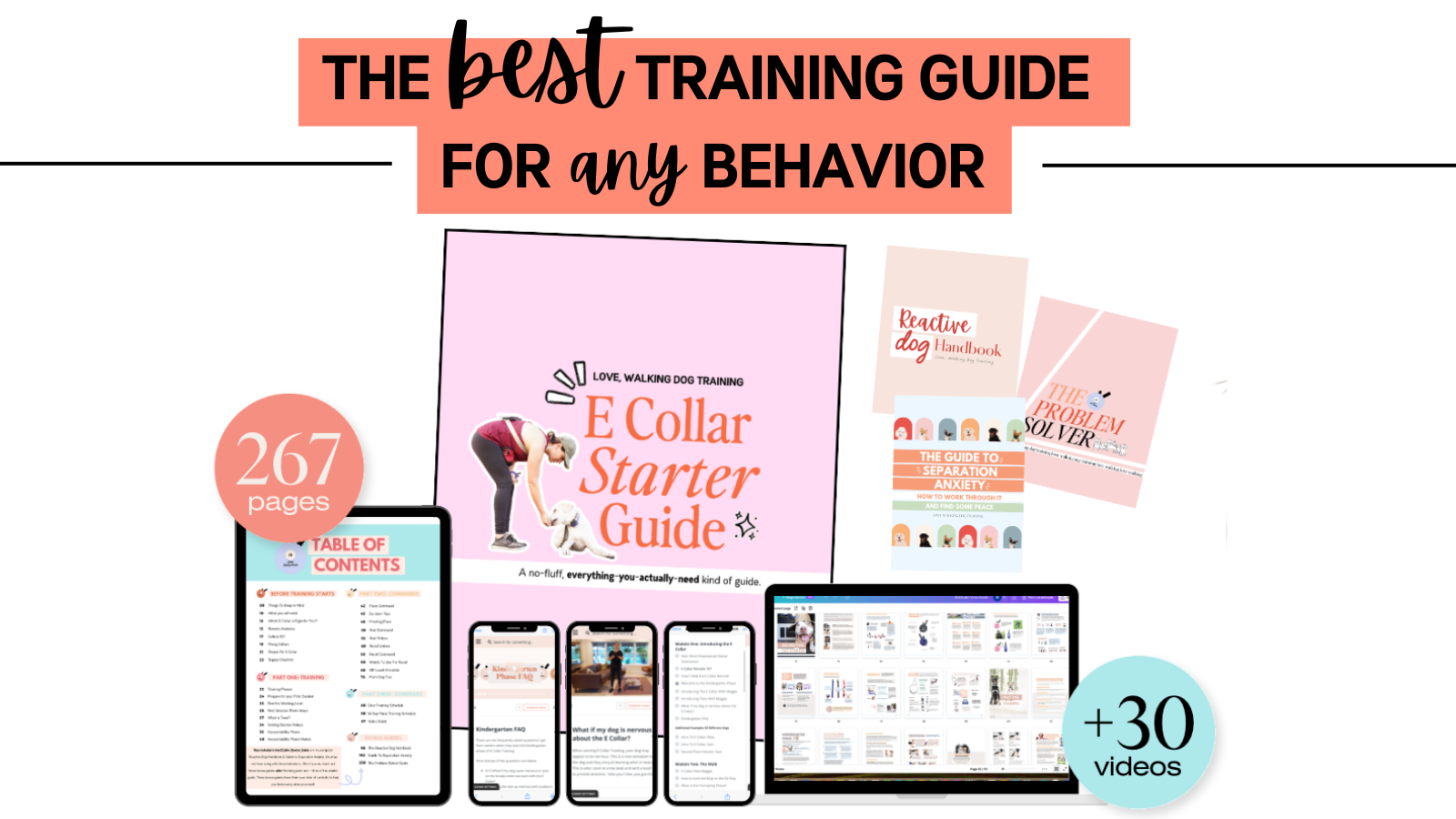Socializing Dogs & the different ways to do it
I think when most of us hear “socializing dogs” we imagine our dogs chasing each other around, prancing, rustling around, and becoming the best of friends! Often the term socializing is used interchangeably with the word play and for some dogs, that is how it looks. But it can look different for other dogs and that’s okay, too! A dog’s personality plays a big role in how they socialize with others, just like us humans. There are many ways to socialize dogs that all get the same benefits… so in this blog post I’ll dive into some of my favorite ways - for those dogs that aren’t into roughhousing.
My E-Collar Starter Guide is the best way to learn how to guide your dog through the world with other dogs. If you are reading this and thinking… my dog could never do those things… check out my E—Collar Starter Guide. I think it could be your missing piece!
My dogs, Theo & Johnny (see paragraph below)
A note about personalities before we get into it: the dogs in the picture above are my dogs, Theo and Johnny. I’ve always known that Theo was a particular dog. Not fond of overly energetic personalities and he’s slow to warm up. In this picture, you see him showing his teeth and with most dogs, I’d interrupt this kind of situation. But Johnny (and one of the main reasons we felt he’d be a good fit for our pack) is much more submissive than Theo. Their personalities go well together. So, when Theo shows his teeth (a way to communicate) Johnny respects it and doesn’t push any further.
If Johnny was pushy and more like Theo, this could end up in a fight. I’m sure we could get into much more about this kind of thing but for now, recognizing personality types and knowing that some don’t go together as well as others - it can help give you a deeper understanding of social dynamics with dogs.
And why the different ways to socialize helps ALL dogs socialize based on what’s best for them. Just because your dog is particular doesn’t mean they can’t be “social”. As owners, we have to pick a way of socializing that matches their energy… just like humans do. Alright, let’s get into it.
Calmly Coexisting: Teaching dogs how to exist around each other without all the zoomies is a SKILL WORTH TEACHING (caps felt necessary). And if you want your dog to go to a coffee shop or restaurant with you and stay calm around other dogs, this is a great way to socialize. Yes, literally just being in the same area with another dog - even if they are not necessarily interacting with each other is socializing.
A perfect way to do this is with the place command. Have I ever told you that the place command is my FAVORITE? It’s useful in so many applications, like having dogs be calm in the same area. Did you know you can use anything as “place”? It doesn’t have to be a place cot (because nobody carries those around with them). If you are out and about, place could be a spot under a table you are sitting at, a bench, a small towel you brought with you. Place is how I love to introduce new training dogs to each other if I’m unsure how they’ll match up. And if you haven’t started a place practice with your dog yet, this is your sign. It’s one of the best commands EVER. Download my FREE Place Command Guide to get started… you won’t regret it.
Structured Walking: Another one of my favorite ways to socialize dogs is on the walk. You’ve heard me say many times that giving a dog a job helps to reduce all kinds of behaviors (reactivity, anxiousness, etc.) because they are focusing on their job - rather than obsessing over something else. On a structured walk, your dog has a job - usually the heel command. This is a great way to socialize dogs… Not up in each other’s faces. Create some space and keep it moving. I love this exercise because it puts very little pressure on dogs and helps them feel more confident around others.
Exposure: Another way I love to socialize a dog is to take them out somewhere new and give them a job, like the down command. Doing this helps them observe the world around them while also learning how to relax around distractions. And if you choose to say no to people asking to pet or say hello, it allows your dog to be “social” without putting too much pressure on them. Perfect for reactive or picky dogs that are particular about their friends. Remember that being “socialized” does not mean that they really need to be interacting with anything or anyone. Simply being out in a social setting and practicing calm in a new setting can be enough!
Calm Playing: Socializing can also look like rolling around with each other and getting along. I’ll admit that I love when I have dogs that can play like this. It makes for great pictures - which you know I love! But with Johnny and Theo, it took three whole weeks for a moment like this to happen. It was a slow process. You can check out Johnny’s first highlight on my instagram profile to see how their relationship started. Playing like this is a learned skill that is developed when dogs are accustomed to being around each other. I generally would not expect dogs to socialize like this in a first meeting, although it can happen if their personalities align.
In the end, socializing your dog doesn’t have to look like constant play and tail wags—it can be quiet, structured, and even still. The key is recognizing your dog’s unique personality and choosing socialization methods that support their comfort and growth. Whether it’s calm coexistence, a structured walk, or practicing commands in a new environment, every dog deserves the chance to feel confident and connected in their own way.
I’m always here to help you accomplish your goals with your dog. Reach out on instagram, check out my training guide, or sign up for a 1-1 virtual training sesh with me!





